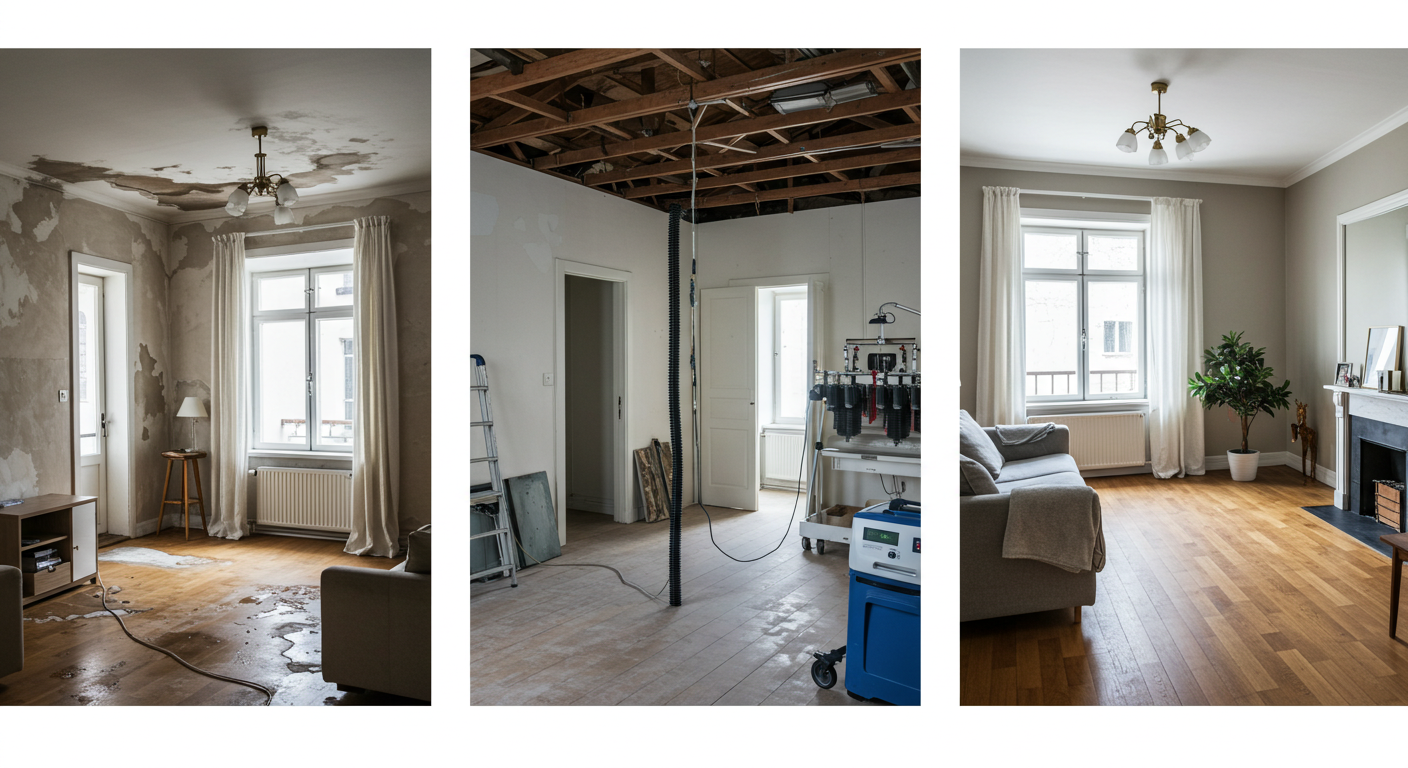Water damage restoration is more than just drying out a wet area. The process involves removing excess water, cleaning affected surfaces, eliminating microbial threats, and restoring the property to its pre-damage condition. Each step requires attention to detail, whether tackling a minor leak or a major flood. For many homeowners, getting a trustworthy team, such as Pure Restore water damage restoration In Denver, ensures that no crucial part of the process is overlooked. The goal isn’t just to make the space look normal—it’s to make it truly safe, clean, and healthy.
Missing or skipping steps can leave hidden moisture behind, sowing future problems. Insurance claims, salvageable belongings, and even your family’s health depend on carefully completing every phase of water damage restoration.
The Importance of Moisture Measurement
Properly concluding a restoration job means ensuring zero excess moisture lingers beneath surfaces. Professionals use Moisture meters and sensors to check behind walls, under floors, or inside ceilings. If these measurements still show abnormal readings—even when everything appears dry—work remains unfinished. According to FEMA guidelines, materials can look dry but contain enough moisture to foster mold growth and deterioration.
Visual Clues That Indicate Completion
Restoration isn’t just about numbers; it’s also about visual inspection. Surfaces should show no signs of staining, swelling, or buckling. Drywall and wood should be firm to the touch without warping or bubbling. Clean, even finishes on paint and flooring also point to a thorough job. However, remember that scientific measurement should always support visual confirmation, as problems can lurk where the eye cannot see.
The Role of Odor and Air Quality
Lingering odors are a red flag that water restoration isn’t fully finished. The target is a fresh, neutral aroma—not musty or earthy. Professionals often use advanced equipment to filter and purify the air throughout restoration. If your home smells clean when you walk inside and runs smoothly with no sneezing or coughing, regular monitoring, aided by tools like air purifiers and humidity gauges, will maintain this standard even after the crew is gone.
Mold Prevention and Inspection
Mold can become an issue within 24 to 48 hours of water exposure. Restoration is only considered complete when a home is fully inspected for mold growth, especially in hidden spaces. Professionals use visual checks, surface sampling, and even air sampling in some cases to certify safety. If any sign of mold is found, remediation must be done before closing the project. This step is not optional—long-term health depends on its thoroughness.
Restoration of Structural Integrity and Finishes
Beyond drying and cleaning, restoration experts must repair all structural elements, finishes, and surfaces. Floors should be stable and flat, walls smooth and solid, and all affected areas should be repainted or refinished to match the rest of the home. Cabinets, trim, and electrical components damaged by water require repair or replacement. The house should feel seamless, with no telltale signs of past damage. These finishing touches aren’t just cosmetic—they impact resale value and peace of mind.
Final Professional Assessments
Reputable water damage restoration ends with a comprehensive final walk-through. Technicians perform one last inspection using both visual and sensor-based checks. They look for any missed moisture, residual odors, or signs of weakness. A written report detailing test results, repairs performed, and maintenance recommendations delivers transparency to homeowners and insurance providers alike. Following expert advice here prevents costly do-overs in the future.
Long-Term Tips for Maintaining a Dry, Healthy Home
Even after restoration is finished, prevention remains a homeowner’s best friend. To catch issues early, maintain gutters and downspouts, inspect appliances, and install leak sensors. Dehumidifiers in vulnerable areas like basements go a long way. Periodic professional inspections are also wise, particularly after heavy rains or when buying a new property. Staying vigilant ensures your restoration investment continues to pay off and your family enjoys a healthy, worry-free environment.

